
OUR CONSORTIUM

Norwegian Institute for Air Research – NILU, Norway
The Norwegian Institute for Air Research (NILU) is an independent, nonprofit research institution established in 1969, staffed by scientists, engineers, and technicians with specialized expertise for working on air pollution problems. NILU is one of the leading specialized scientific laboratories in Europe researching issues related to air pollution, climate change, and health. The atmosphere and climate department (ATMOS) of NILU contributes to better knowledge about pollutants in the atmosphere and what we can do to mitigate the problems they cause. In addition, ATMOS studies the climate system itself, including the dispersal of volcanic ash and radionuclides.
NILU is the principal coordinator of the EYE-CLIMA project, led by Rona L. Thompson. The role of the ATMOS research team in the EYE-CLIMA project is the inverse modeling of greenhouse gases and black carbon.
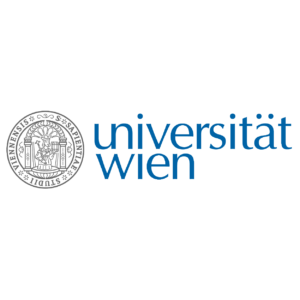
Universität Wien, Austria
The University of Vienna, founded in 1365, is the oldest university in the German-speaking world and one of the largest in Central Europe. It is the largest Austrian research institution hosting 6,800 academics within 15 faculties and five centers, dedicated to both basic and applied research. UNIVIE has recently made large investments in its Department of Meteorology and Geophysics, where this project will be carried out. All its four full professors are newly appointed (starting in 2019-2021), rooms have been renovated, and new computing infrastructure has been set up, thus providing an excellent environment for carrying out innovative research projects.
The EYE-CLIMA work will be carried out under the supervision of Andreas Stohl. UNIVIE’s primary role in the project is the inverse modeling of F-gases to determine their global and European emissions.
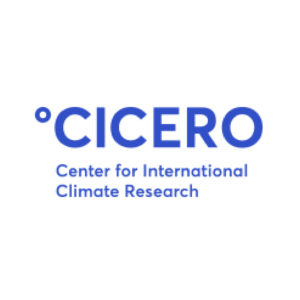
CICERO Center for International Climate Research, Norway
CICERO Center for International Climate Research in Oslo, Norway, is a world-leading institute for interdisciplinary climate research established in 1990. CICERO delivers high-quality research and knowledge that help society respond to climate challenges and strengthen international climate cooperation. CICERO is internationally recognised for its research on the climate effects of anthropogenic emissions, society’s response to climate change, and the formulation of international agreements. CICERO has played an active role in the IPCC since 1992.
Scientists mainly from CICERO’s climate mitigation research group contribute to EYE-CLIMA, as co-lead of the outreach work package and with bottom-up modelling.

Internationale Institute for Applied Systems Analysis, Austria
The International Institute for Applied Systems Analysis (IIASA) is an international research institute that advances systems analysis and applies its research methods to identify policy solutions to reduce human footprints, enhance the resilience of natural and socioeconomic systems, and help achieve sustainable development goals. It performs its internationally oriented research from Laxenburg, close to Vienna in Austria. One of IIASA’s strengths is in providing scientific guidance for policy negotiations, mostly on an international level, on issues such as air pollution, biodiversity, and climate change.
In EYE-CLIMA, IIASA contributes with anthropogenic emission data of non-CO2 forcers from the GAINS model, with modeling and calibrating above-ground biomass to assess biomass changes from land cover/land use datasets, and with its links to achieve policy impacts.

University of Bremen, Germany
The Institute of Environmental Physics (IUP) at the University of Bremen (UB) in Northern Germany is one of the leading European research institutions in the fields of ground-, air- and space-borne remote sensing of the atmosphere. The research of the IUP is focused on the retrieval and interpretation of tropospheric and stratospheric gases, aerosols and clouds from satellite sensors, including the generation of important long-term data sets of tropospheric reactive gases and greenhouse gases. Scientists from IUP are involved in many satellite missions, including GOME, SCIAMACHY, GOME-2, Sentinel-5-Precursor (S5P), GOSAT and OCO-2 and in the preparation of the future satellites Sentinel-4 and 5. The satellite sensors GOME (on ERS-2) and SCIAMACHY (on ENVISAT) were proposed and supported by the IUP team since the early 1990s. IUP, with its international partners, also proposed the CarbonSat mission concept to the ESA Earth Explorer 8 (EE8) satellite mission to measure the greenhouse gas (GHG) distributions from the regional to the local “point source” scale. CarbonSat was not selected for EE8, but its specifications have been refined for the definition of the future Copernicus CO2M mission (to be launched around 2026). Parallel to satellite studies, an important number of ground-based and air-borne (e.g., Methane Airborne Mapper (MAMAP)) remote-sensing experiments are carried out by IUP scientists using the microwave, (near)infrared and UV-visible spectroscopic techniques.
In the EYE-CLIMA project, the team at IUP is responsible for the evaluation of global, space-based observations of greenhouse gases and for the development and application of retrieval methods to detect and quantify methane point source emissions from high-resolution satellite measurements.

University of Crete, Greece
The University of Crete (UOC) established in 1973 is a young, multi-disciplinary, research-oriented public educational institution. The University is committed to providing a stimulating environment that strives for excellence and promotes education through teaching and research. The Department of Chemistry of UOC established in 1985 has a strong research orientation and seeks to develop stronger links to International research collaborators and the private production sector. It offers three specialized master programs, among which one on Environmental Science and Engineering established in 1998 and run by the Environmental Chemical Processes Laboratory (ECPL). ECPL has long experience in chemistry-transport and Earth system numerical modelling, environmental data acquisition and interpretation, as well as training students and young researchers on climate change and environmental topics.
ECPL contributes to EYECLIMA with its expertise in aerosol simulations and black carbon observations and is performing 3-d inverse TM5-MP model simulations to optimize BC emissions on a global scale and focusing on Europe in the frame of WP 3.

Karlsruher Institute for Technology, Germany
The IMK-IFU at the KIT-Campus Alpin in Garmisch-Partenkirchen is the largest Bavarian climate research institution and has been active in the region since 1954. It is the oldest environmental research institution in Germany dedicated to global issues. Since 2002, the institute has been part of the Helmholtz Association as part of today’s KIT. The Global Land Ecosystem Modelling group from the KIT-Campus Alpin is interested in how land ecosystems, climate change and land-use change interact globally. A number of related key questions are explored through a range of modelling approaches also to identify solutions to sustainable development arising from land system dynamics.
In the EYE-CLIMA project, we will explore how different land management strategies could affect CO2 and N2O emissions in European agricultural soils using the dynamic vegetation model LPJ-GUESS

European Centre for Medium-Range Weather Forecasts
The European Centre for Medium-Range Weather Forecasts (ECMWF) is both a research institute and a 24/7 operational service, producing global numerical weather predictions and other data for its Member and Co-operating States and the broader community. ECMWF is also a key player in Copernicus, the Earth Observation component of the European Union’s Space programme, as the entrusted entity for implementing and operating the Copernicus Climate and the Atmosphere Monitoring Services. The Copernicus Atmosphere Monitoring Service (CAMS) provides consistent and quality-controlled information related to air pollution and health, solar energy, greenhouse gases and climate forcing, everywhere in the world. Within the CAMS programme, ECMWF is currently implementing a new observation-based emission monitoring service driven by a new generation of highly accurate and precise atmospheric composition (CO2, CH4, NOx, and other species) imaging satellites as part of the Copernicus Sentinel programme. Such a capacity will deliver consistent and reliable information to support informed policy- and decision-making processes, both at the national and European levels.
In the framework of the EYE-CLIMA project, ECMWF will provide updated CH4 emission information by routinely evaluating Sentinel-5p/TROPOMI observations against inventory-based emission estimates within ECMWF’s Integrated Forecasting System (IFS). In particular, the prototype CH4 hotspot detection system will be further improved to reduce false detections by accounting for regional biases in CH4 observations caused by aerosols and/or albedo effects. The system will be used to detect CH4 anomalies relative to national reported emissions. The aim is to quantify misreported CH4 emissions and deliver optimized CH4 inventories.

Finnish Meteorological Institute, Finland
Finnish Meteorological Institute (FMI) is a research and service organization under the Ministry of Transport and Communications of Finland. Its main objectives are to provide the Finnish nation with the best possible information about the atmosphere above and around Finland, to ensure public safety relating to atmosphere-related hazards and to satisfy requirements for specialized meteorological products. FMI has over 600 employees, of which about 350 are working in the sector “Research and Development”.
The Carbon Cycle Group of the Climate System Research Unit at FMI is developing ecosystem process modelling and inverse modelling techniques for estimating sources and sinks of greenhouse gases in Europe and globally and utilising the most recent satellite data in the work. In the EYE-CLIMA project, they are running high-resolution regional applications for solving anthropogenic and natural methane budgets and combining the results with national greenhouse gas inventories.
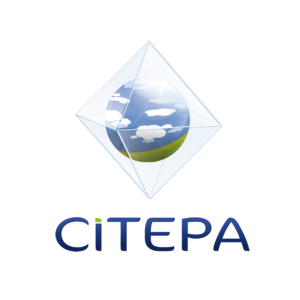
Centre Interprofessionnel Technique d’Etudes de la Pollution Atmospherique Association, France
CITEPA is a non-profit, independent association bringing together rigorous, impartial experts involved in protecting the environment, advocating dialogue, and sharing knowledge. Committed and independent, our association guides the actors of the ecological transition in France and around the world. It assesses the impact of human activities on the climate and air pollution. It produces reference data and develops solutions to promote emissions reduction, air quality improvement, and adaptation to climate change. The multidisciplinary Citepa team participates in constructing a sustainable world and is committed to ecological transition. Its scientific vocation is to produce and transmit reliable knowledge on atmospheric pollutants and greenhouse gases, to support public and private decision-makers, and to strengthen the capacities of countries in the fight against climate change and atmospheric pollution. Citepa strengthens the capacity of public and private actors to respond to ecological challenges in France and abroad. It provides specific support to third countries to implement the Paris Agreement and LRTAP Convention. Citepa as a French state operator produces the French national GHG and air pollutant inventories for the UNFCCC, the LRTAP Convention, and the UE regulations.
Within EYE-CLIMA, Citepa provides insights and guidance for relevant comparisons between top-down modeling results and national inventory reported under the UNFCCC. Citepa will, in particular, be involved in pilot studies for comparing estimates of CO2 (from LULUCF) and CH4 and N2O emissions in France.
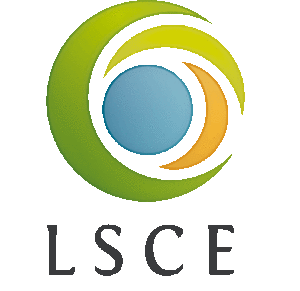
Laboratory of Climate and Environmental Sciences, France
The Laboratory of Climate and Environmental Sciences (French: Laboratoire des Sciences du Climat et de l’Environnement, LSCE) is a joint research unit of the French Alternative Energies and Atomic Energy Commission (French: Commissariat à l’énergie atomique et aux énergies alternatives, CEA), the French National Centre for Scientific Research (French: Centre national de la recherche scientifique, CNRS), and the University of Versailles Saint-Quentin (UVSQ). With more than 310 staff members, the LSCE has leading international expertise in the carbon cycle and climate modelling, the assimilation of data on
land surface properties, as well as measurements of greenhouse gases in the atmosphere and inversions of their fluxes going from regional to national and global scales.
In EYE-CLIMA, LSCE brings its scientific and technical expertise on land surface modelling, on atmospheric inverse modelling and carbon cycle modelling in general. In particular, LSCE uses the land-surface model ORCHIDEE to provide improved natural surface fluxes. Furthermore, LSCE is one of the core developers of the Community Inversion Framework, which is the main inversion tool used in the project. Finally, LSCE uses its extensive expertise in verifying NGHGI using top-down estimates to contribute to the sectoral attribution of consolidated estimates and uncertainties and to the synthesis of GHG and BC surface fluxes. We merged CEA and CNRS contributions into LSCE contributions.

Johann Heinrich von Thünen-Institut, Bundesforschungsinstitut für Ländliche Räume, Wald und Fischerei, Germany
The Thünen Institute is a research institute of the Federal Ministry of Agriculture in Germany. It works at the interface of science, politics and society. Among other tasks, the Thünen Institute compiles the German emission inventories for the sectors of Agriculture and Land Use, Land-Use Change and Forestry (LULUCF). It also coordinates the German contribution to the Integrated Carbon Observation System (ICOS).
The Thünen Institute contributes to EYE-CLIMA with its expertise regarding GHG emissions in Germany and provides data on land-management activities and emissions.
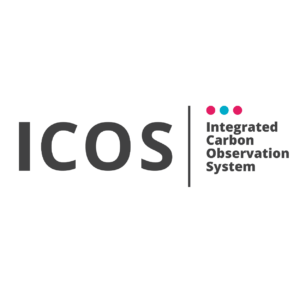
Integrated Carbon Observation System European Research Infrastructure Consortium
The Integrated Carbon Observation System, ICOS provides standardized and open data from more than 170 measurement stations across 16 European countries. The stations observe greenhouse gas concentrations in the atmosphere as well as carbon fluxes between the atmosphere, the land surface and the oceans. Thus, ICOS is rooted in three domains: Atmosphere, Ecosystem and Ocean. In EYE-CLIMA, ICOS is involved in organizing the summer schools.

Science Partners, France
Science Partners is a shared lab of freelance researchers that has developed important expertise in environmental research and has become an important contributor to both academic and private research in the field of climate change and atmospheric chemistry in France and Europe. Science Partners will contribute to EYE-CLIMA for its expertise in activities on land surface modeling and on atmospheric inverse modeling using surface measurements or satellite observations. In particular, Science Partners will provide estimates for biogenic CO2 fluxes in Europe, using the Community Inversion Framework inversion system coupled to the chemistry-transport model CHIMERE. In addition, we also contribute to the development of the CIF. Finally, Science Partners will contribute to the quantification of uncertainties and to the description of the best practice guidelines for atmospheric inversions.

Eidgenössische Materialprüfungsund Forschungsanstalt, Switzerland
EMPA is an interdisciplinary Swiss research institute for applied materials sciences and technology that aims at developing solutions for current problems facing industry and society in areas such as energy, the environment, mobility, health and safety. Empa provides its partners from the industry with customized services and solutions that not only enhance their innovative edge and competitiveness but also help to improve the quality of life for the public at large.
In EYE-CLIMA, Empa will be responsible for the F-gases and their data evaluation in terms of emission verification. F-gases in focus are: SF6, HFC-23, HFC-32, HFC-125, HFC-134a and HFC-143a. Empa will be responsible for checking the consistency of data of these F-gases from different providers, such as AGAGE, NOAA and GAW (for SF6 only). Further datasets are campaign data from IAGOS-CARIBIC, NOAA and NASA, and other aircraft campaigns.
Then Empa will support the aggregation of the data for modelling of emissions and the comparison of the top-down estimates of F-gases to national inventory reports of UNFCCC and other published emission reports (such as the EEA reports). An important additional contribution of Empa in terms of F-gases is the Annual Kigali Index, which has been recently developed by Empa and which allows checking the compliance of the global and regional phase-down of fluorinated greenhouse gases prescribed in the Kigali Amendment to the Montreal Protocol.

Eidgenössische Technische Hochschule Zürich, Switzerland
ETH Zurich was founded in 1855 and is one of the world’s leading universities for technology and natural sciences. ETH Zurich’s success builds on an excellent education for about 24´500 students in Bachelor´s, Master´s and doctoral studies, ground-breaking fundamental research, and knowledge transfer that benefits society. The Grassland Sciences group in the Department of Environmental Systems Science aims to increase the process- and system-oriented understanding of plant and ecosystem physiology, functional plant diversity, and biogeochemistry in agroecosystems and forests in response to management and environmental drivers, across spatial and temporal scales. A particular focus of the multidisciplinary research is on the biosphere-atmosphere greenhouse gas exchange (CO2, H2O, CH4, N2O) and carbon sequestration.
In EYE-CLIMA, the Grassland Sciences group is contributing to the bottom-up modelling by collecting up-to-date data on drivers of greenhouse gas fluxes from agroecosystems, particularly N2O fluxes from arable sites.
